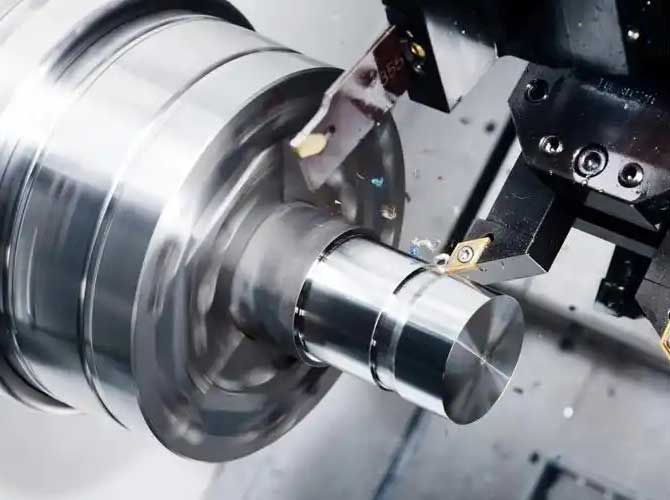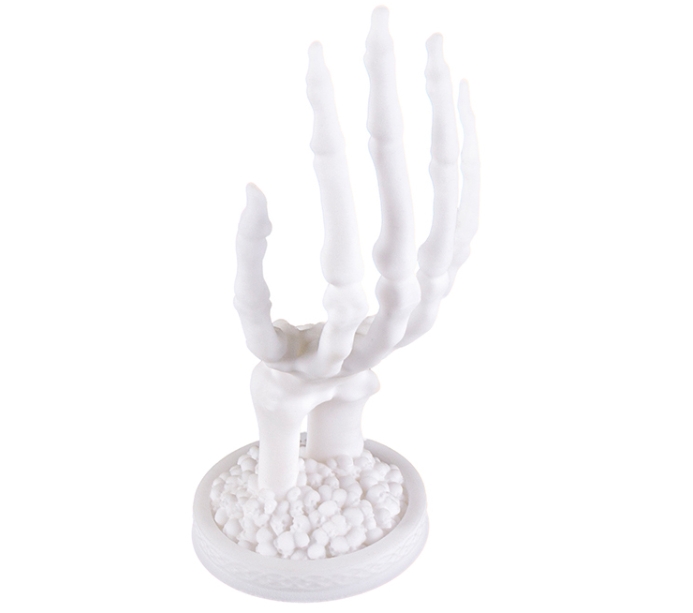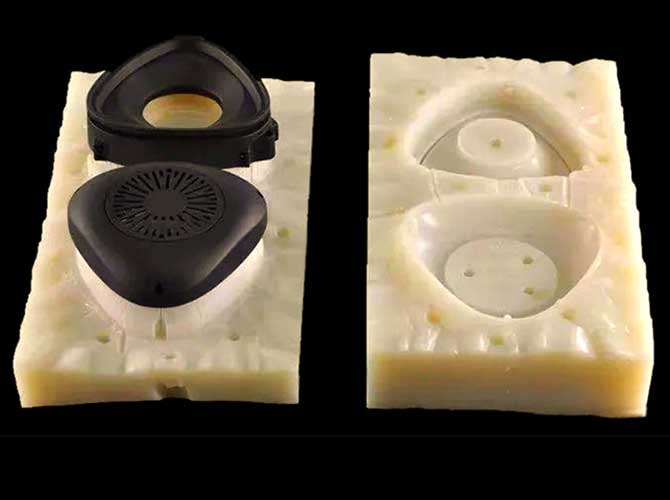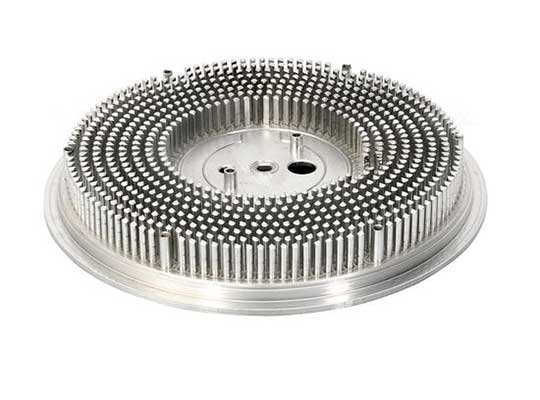If you’ve ever considered using 3D printing for prototyping or small-batch production, Anda mungkin tertanya -tanya: “What determines the cost of 3D printing?” Unlike traditional manufacturing methods with fixed pricing structures, 3D printing costs can vary significantly from project to project. Kebenaran adalah, several key factors influence how much you’ll pay for 3D printing services or in-house production. This guide will explore these factors in detail, helping you understand what drives 3D printing costs and how to estimate expenses for your specific project.
Understanding 3D Printing Costs: More Than Just Material
Sebelum menyelam menjadi faktor tertentu, it’s important to recognize that 3D printing cost isn’t a one-size-fits-all number. It’s a cumulative result of multiple variables working together. While some projects might cost just a few dollars for a small plastic part, others can run into hundreds or even thousands of dollars for large, complex components made with high-performance materials.
Whether you’re using a desktop 3D printer for a hobby project or contracting with a professional service bureau for industrial prototypes, the same core factors apply. By understanding these variables, you can make informed decisions about material selection, design choices, and service providers to balance quality and cost effectively.
Kos bahan: The Foundation of 3D Printing Expenses
One of the most significant factors associated with 3D printing costs is material cost. 3D printing materials come in a wide range of types, qualities, and price points, each suited for different applications—and each impacting your budget differently.
Material Types and Their Price Ranges
3D printing materials can be broadly categorized into several groups, each with its own cost structure:
- Plastics and Polymers: The most common 3D printing materials, including PLA, Abs, dan petg. PLA, a popular choice for beginners and concept models, is generally the most affordable, while engineering-grade plastics like ABS or nylon cost more due to their better mechanical properties.
- Resin: Used in stereolithography (SLA) and digital light processing (DLP) pencetak, resins offer high detail and smooth surface finishes. Standard resins are moderately priced, while specialty resins (like flexible, high-temperature, or biocompatible varieties) command higher prices.
- Logam: Metal 3D printing materials—such as titanium, Keluli tahan karat, and aluminum—are the most expensive due to their raw material costs and the specialized printers required to process them. They’re primarily used in industrial applications where strength and durability are critical.
- Composites: Materials reinforced with fibers (like carbon fiber or glass) combine light weight with high strength but come at a premium price compared to standard plastics.
How Material Quantity Affects Cost
In 3D printing, material cost is typically calculated by weight (grams or kilograms) or volume (cubic centimeters). The more material your part requires, the higher this component of the cost will be. Contohnya, a small figurine might use only 50 grams of PLA, while a large prototype enclosure could use 500 grams or more.
Real-World Material Price Examples
Untuk meletakkan ini dalam perspektif, here are approximate price ranges for common 3D printing materials (converted to USD for consistency):
| Jenis Bahan | Julat harga (per gram) | Typical Applications | Key Cost Drivers |
| PLA Plastic | \(0.05 – \)0.10 | Concept models, low-stress parts | Basic formulation, widespread availability |
| Plastik abs | \(0.10 – \)0.20 | Prototaip fungsional, bahagian tahan lama | Better mechanical properties, more complex production |
| Standard Resin | \(0.20 – \)0.50 | High-detail models, jewelry prototypes | Photo-reactive chemicals, fine surface finish |
| Red Wax Resin | \(0.80 – \)1.50 | Investment casting patterns, bahagian ketepatan tinggi | High accuracy, excellent detail reproduction |
| Black Engineering Resin | \(0.20 – \)0.40 | Functional prototypes requiring toughness | High-temperature resistance, impact strength |
| Stainless Steel (Powder) | \(1.00 – \)3.00 | Industrial components, metal parts | Raw material cost, specialized processing |
As you can see, material prices can vary by a factor of 30 atau lebih, from budget-friendly PLA to high-end metal powders. This variation makes material selection one of the most impactful decisions for controlling 3D printing costs.
Equipment Costs: Investing in 3D Printing Capability
Whether you’re using in-house equipment or paying for service bureau time, equipment cost plays a significant role in 3D printing expenses. This factor encompasses both the initial investment in 3D printers and ongoing operational costs.
3D Printer Price Ranges
The cost of 3D printers themselves varies dramatically based on technology, saiz, ketepatan, and manufacturer:
- Entry-Level Desktop Printers: These range from \(200 ke \)1,000 and are suitable for hobbyists, educators, and simple prototyping with PLA or basic resins. They offer limited build volumes and lower precision but provide an affordable entry point.
- Mid-Range Professional Printers: Priced between \(1,000 dan \)10,000, these printers offer better accuracy, larger build volumes, and compatibility with a wider range of materials. They’re commonly used in small businesses and design studios.
- Industrial-Grade Printers: These high-end machines can cost anywhere from \(10,000 ke \)500,000 atau lebih. They feature exceptional precision, large build capacities, and the ability to print with advanced materials like metals and high-performance polymers. Industrial printers are found in manufacturing facilities and specialized service bureaus.
How Equipment Costs Translate to Project Expenses
For service bureaus, equipment costs are factored into their hourly or per-project rates to recoup their investment over time. More expensive printers with higher capabilities typically result in higher service fees. For in-house operations, you’ll need to consider not just the purchase price but also depreciation, maintenance, and energy consumption over the printer’s lifespan.
Why Higher-Priced Printers Mean Higher Costs
High-end 3D printers justify their higher costs through better performance:
- Increased Precision: They can produce parts with tighter tolerances (as low as ±0.01 mm in some cases), mengurangkan keperluan untuk pemprosesan selepas.
- Faster Printing Speeds: Some industrial printers can complete projects in a fraction of the time required by desktop models.
- Material Compatibility: They can handle expensive, specialized materials that require precise temperature control or inert environments.
- Larger Build Volumes: Accommodating bigger parts without assembly, which saves time and improves structural integrity.
These capabilities make industrial printers essential for certain applications but also contribute to higher 3D printing costs for projects that require them.
Process Difficulty: How Complexity Drives Up Costs
Another major factor associated with 3D printing costs is process difficulty—the complexity of the part being printed and the technical challenges involved in producing it. Not all 3D printed parts are created equal, and more challenging projects require more time, expertise, and sometimes specialized equipment.
Design Complexity Factors
Several design characteristics influence process difficulty and, consequently, kos:
- Geometric Complexity: Parts with intricate details, overhangs, internal cavities, or lattice structures are more complex to print. They often require support structures (which use additional material and increase post-processing time) or slower printing speeds to ensure accuracy.
- Part Size: Larger parts require more material, longer printing times, and may need to be printed in sections and assembled later—all of which add to costs.
- Wall Thickness and Tolerances: Parts with very thin walls or tight tolerances demand higher precision settings and slower printing speeds to avoid defects, increasing both time and material usage.
- Surface Finish Requirements: Achieving a smooth, high-quality surface finish often requires slower print speeds, finer layer heights, and additional post-processing steps.
Time Investment in Complex Projects
3D printing is generally a slower process than traditional manufacturing, and complex parts extend printing time significantly. A simple small part might print in a few hours, while a large, detailed component could take 24 hours or more. Since many service providers charge by the hour (in addition to material costs), longer print times directly increase expenses.
Contohnya, a basic phone case might take 3-4 hours to print, while a complex mechanical assembly with moving parts could require 15-20 hours of printer time. This fivefold difference in production time would result in a substantial cost difference even if both projects use the same material.
Other Expenses: The Hidden Costs of 3D Printing
Beyond materials and equipment, several other expenses contribute to the total cost of 3D printing. These are often overlooked but can add up significantly, especially for complex or high-quality projects.
Labor Costs
3D printing isn’t entirely automated—skilled technicians are needed to:
- Prepare 3D models for printing (including slicing, orientation, and support generation)
- Set up and monitor printers during production
- Troubleshoot issues that arise during printing
- Remove parts from build platforms and perform initial cleanup
Labor costs vary based on the technician’s expertise and the project’s complexity. Simple projects might require minimal labor, while complex parts with multiple iterations can demand significant technical time. For service bureaus, labor costs are typically included in hourly rates or per-project fees.
Post-Processing Costs
Very few 3D printed parts are ready for use straight off the printer. Most require some form of post-processing, which adds time and expense:
- Support Removal: Removing support structures (especially for complex resin prints) can be time-consuming and may require specialized tools.
- Sanding and Polishing: Achieving a smooth surface finish often involves sanding with progressively finer grits, which adds labor time.
- Painting or Coating: Coloring parts or applying protective coatings requires materials and labor.
- Perhimpunan: Multi-part prints may need gluing or mechanical assembly.
- Menyembuhkan: Some resin or composite parts require additional curing in UV chambers or ovens to achieve full strength.
Post-processing can account for 10-50% of total project costs, depending on the part’s requirements. Contohnya, a prototype that needs a smooth, painted finish will cost more than one used for internal testing with a raw print surface.
Waste and Material Efficiency
3D printing generates some unavoidable waste, which affects costs indirectly. Support structures, failed prints, and material scrap all represent material that’s paid for but not used in the final part. While modern software and printing techniques have reduced waste significantly, it’s still a factor—especially for complex parts requiring extensive supports.
Material efficiency also plays a role. Parts designed with hollow interiors or lattice structures use less material than solid designs, mengurangkan kos. Conversely, inefficient designs with unnecessary solid sections waste material and increase expenses.
Calculating 3D Printing Costs: A Practical Example
To better understand how these factors interact, let’s look at a practical example: a small functional prototype for a consumer product.
Example Project Breakdown
- Part Details: A 100-gram component with moderate complexity, requiring a smooth surface finish and moderate durability.
- Pemilihan bahan: Black engineering resin (kos \(0.30 per gram) = \)30 in material costs.
- Masa cetak: 6 hours on a mid-range SLA printer (printer time cost: \(15/hour) = \)90 in equipment time.
- Labor Costs: 1 hour for setup and monitoring + 1 hour for post-processing = $40 in labor.
- Post-Processing Materials: Sandpaper, primer, and paint = $10.
Total Estimated Cost: \(30 + \)90 + \(40 + \)10 = $170.
This example shows how material costs are just one component of the total expense. In this case, equipment time and labor make up the largest portion of the cost—highlighting why it’s important to consider all factors when estimating 3D printing expenses.
Getting Accurate 3D Printing Quotes: Key Information to Provide
To receive accurate cost estimates for your 3D printing project, you’ll need to provide potential service providers with specific information that addresses all the cost factors we’ve discussed:
- 3D Model Files: A detailed CAD model (STL, STEP, or OBJ format) allows accurate assessment of part size, kerumitan, dan keperluan bahan.
- Material Preferences: Specify if you have particular materials in mind or if you’re open to recommendations based on cost and performance.
- Quantity: Will you need one prototype or multiple copies? Some providers offer volume discounts for small batches.
- Tolerance and Finish Requirements: How precise does the part need to be? What surface finish is required (raw, sanded, painted, dll.)?
- Permohonan: How will the part be used? This helps providers recommend appropriate materials and processes that balance cost and performance.
By providing this information upfront, you’ll get more accurate quotes and avoid unexpected costs later in the process.
Yigu Technology’s View on 3D Printing Costs
Yigu Technology believes 3D printing costs reflect a balance of material, peralatan, and expertise. While upfront quotes vary, understanding these factors helps clients make informed choices. We recommend prioritizing material and precision needs first, then optimizing design complexity to control expenses, ensuring cost-effective yet high-quality results for every project.
Soalan yang sering ditanya (Soalan Lazim)
- Why does 3D printing cost vary so much between projects?
3D printing costs depend on material type, part complexity, print time, and post-processing needs. A small, simple PLA part may cost \(20, while a large, complex metal part could exceed \)500 due to these variables.
- Can I reduce 3D printing costs without sacrificing quality?
Ya, by optimizing design (reducing unnecessary material), choosing appropriate materials for your needs, and minimizing post-processing requirements, you can lower costs while maintaining quality.
- Are material costs or equipment costs more significant for 3D printing?
It depends on the project. Kecil, simple parts often have higher equipment/labor costs relative to materials, while large parts or those using expensive metals usually have higher material costs.




